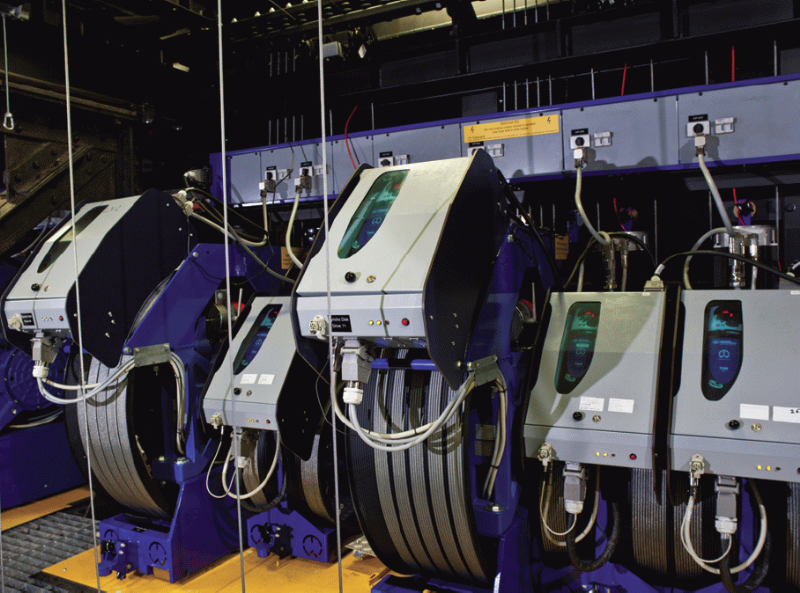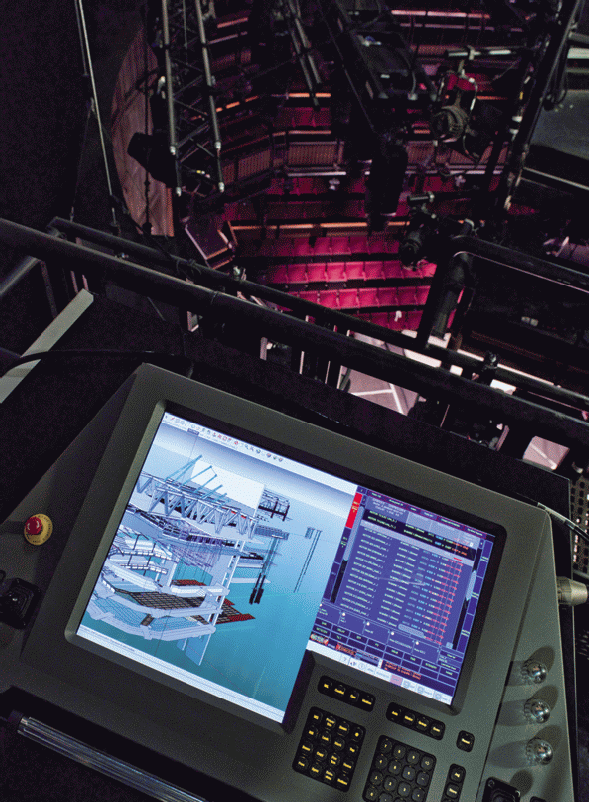 The four-year, £112 million transformation of the Royal Shakespeare Theatre in Stratford-upon-Avon has included a major project to automate the movements of back-drops and scenery as well as the complex system of lighting arrays. At the heart of the project, designed and installed by Dutch theatre automation company Trekwerk, there are around 100 AC drives and servo motors from Control Techniques. The contract was awarded by Trekwerk to Control Techniques’ Rotterdam Drive Centre.
The four-year, £112 million transformation of the Royal Shakespeare Theatre in Stratford-upon-Avon has included a major project to automate the movements of back-drops and scenery as well as the complex system of lighting arrays. At the heart of the project, designed and installed by Dutch theatre automation company Trekwerk, there are around 100 AC drives and servo motors from Control Techniques. The contract was awarded by Trekwerk to Control Techniques’ Rotterdam Drive Centre.
Trekwerk was responsible for the renovation of the over-stage installation, including the development, design, manufacture and installation of 60 winches plus hoists for 30 light arrays. Trekwerk has used Control Techniques’ drives exclusively for many years in mechanised rigging systems for theatres across Europe. It has also developed and refined its TNM control system and the advanced ‘SynchroDisk’ winch systems used at the RSC, which provide virtually silent operation.
The original theatre featured a proscenium-arch stage and a seating capacity of about 1,400 people. The renovated theatre now has a 1,040 seat thrust stage auditorium that brings actors and audiences closer together, with the distance of the furthest seat from the stage being reduced from 27m to just 15m. The experience is much closer to how it would have been when Shakespeare’s plays were first produced, but with stage remodelling and lighting effects that can only be achieved with the cutting-edge electronics offered by Trekwerk and Control Techniques.
Often different productions are performed in the matinee and the evening and the RSC has just two hours to complete the changeover. With the new automation system in place, this is now achieved with ease.
“The winch system is very advanced and gives us much greater flexibility in set design and operation,” says RSC’s head of automation, Adam Harvey. “Safety is paramount, of course, and this is inherent in the whole project. It is very important to maintain the theatrical illusion and the reliability of the many winches involved in each production is crucial. We haven’t had a single drive fail which is a great result.”
All of the winches are fitted with Control Techniques 15kW Unidrive SP AC drives operating in servo mode and twinned with Unimotor 190 fm servo motors fitted with double encoders for precise positioning and speed control.
 A total of 46 drives are fitted to 60 winches with at least half of these being positioned above the thrust stage. Any of these can be configured for different duties from lifting of scenery to controlling the ‘flying’ of actors.
A total of 46 drives are fitted to 60 winches with at least half of these being positioned above the thrust stage. Any of these can be configured for different duties from lifting of scenery to controlling the ‘flying’ of actors.
Each winch drive is fitted with an SM-Applications Plus module that is programmed to control all of the winch motions, with the load being calculated internally, based on the current being drawn by the motor and checked against a load cell signal for additional safety. Each motor is fitted with both an incremental encoder for speed control and a Sin/Cos absolute encoder for position feedback. All winches are capable of lifting at 2m/s. Sixty of the winches are of a unique design called SynchroTwin. This allows one drive to control two 2m circumference winch cable drums either independently or synchronised together. This versatile arrangement saves valuable space in the busy, over-crowded plant area above the stage.
There are 30 light clusters controlled by 1.5kW Unidrive SP drives and size 115 Unimotor fm servo motors with double-brakes. This facilitates the flying of lights in and out at a speed of 1m/s, using the ‘Light-Lock’ anti-swing device, patented by RSC’s head of lighting, Vince Herbert.
A single DC bus fed by two rectifiers feeds all drives. During braking, recovered energy is recycled via the drives to the DC bus, producing some energy-savings.
All drives that communicate with each other using Control Techniques’ own high-speed network CT Net, also communicate via CT Net with the Trekwerk control system. Three TNM control desks are pre-programmed with all critical movements for each performance and over-ride joy-stick control can be used to provide manual speed up/slow down control to maintain synchronicity. The TNM control system executes instructions to the drives. With the detailed motor movements being programmed within the SM-Applications Plus module in each drive. All programmed movements can be reviewed in the 3D graphics.
The Unidrive SP ‘Solutions Platform’ AC variable speed drive range spans 0.37kW right up to 1.9MW. It is configurable into five operating modes – open loop, RFC (rotor flux control), closed loop vector, servo & regenerating modes. With a range of plug-in option modules, its onboard PLC can be supplemented with programmable, specialist feedback and communication modules.
The SM-Applications Plus module transforms the Unidrive SP drive into a powerful automation controller that adds PLC functionality and can connect to the CT Net drive-to-drive network. This gives all the benefits of a fully distributed control system including better performance, reduced cost and smaller electrical panel sizes.

